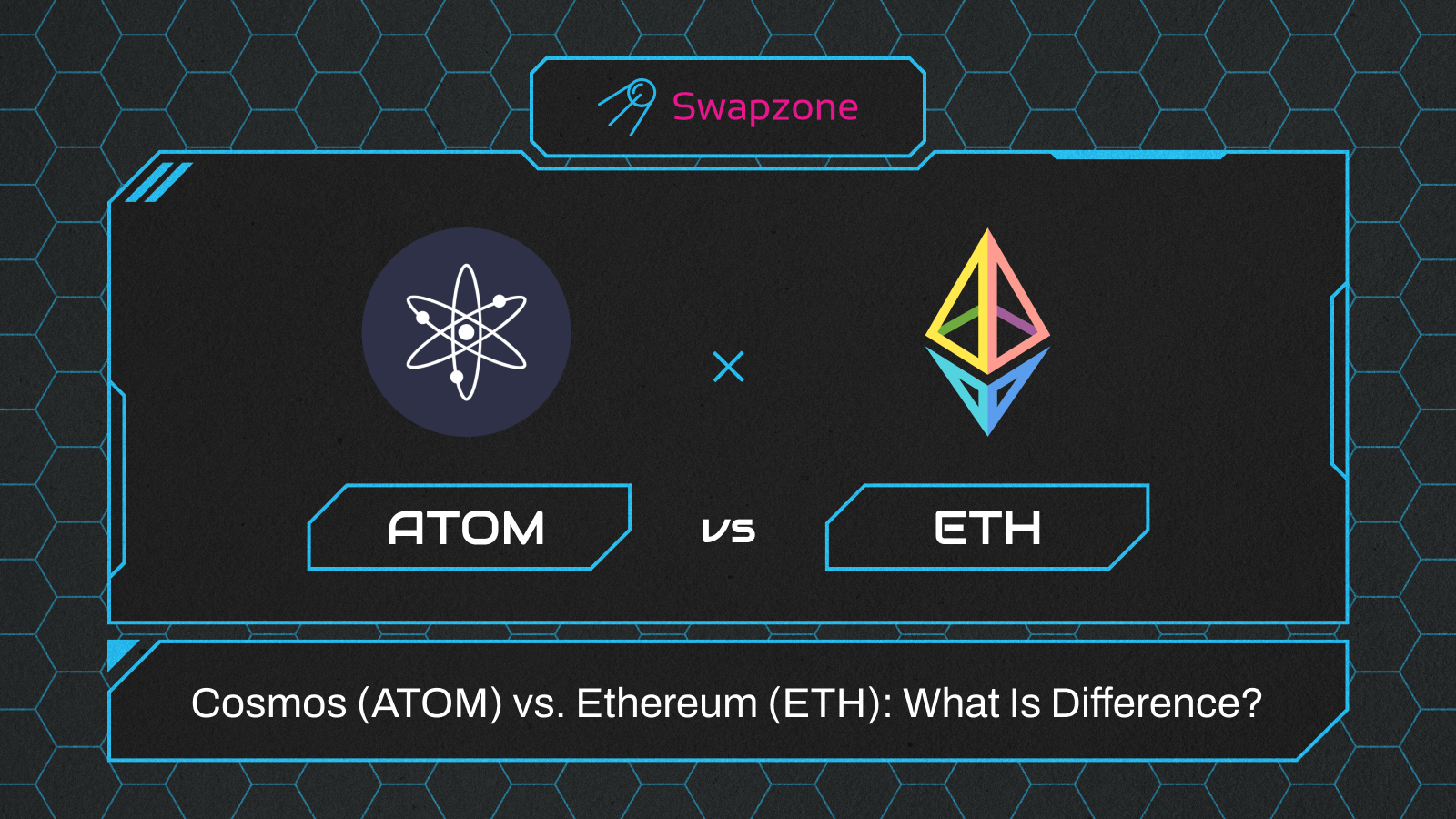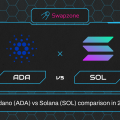In the ever-evolving landscape of blockchain technology, Ethereum and Cosmos emerge as prominent contenders, each offering unique solutions to the challenges and opportunities within the decentralized ecosystem. This article provides a comprehensive comparison between Ethereum and Cosmos, delving into their technical overview, consensus mechanisms, and smart contract capabilities.
By examining their respective strengths and weaknesses, we aim to offer valuable insights for developers, investors, and enthusiasts navigating the decentralized realm. Through a detailed exploration of use cases and community developments, readers will gain a deeper understanding of how these platforms shape the future of blockchain technology.

Key Pros and Cons of Ethereum and Cosmos
Ethereum and Cosmos each offer distinct advantages and face unique challenges in the blockchain landscape. Ethereum‘s strengths lie in its robust security protocols and capacity for executing complex programs through smart contracts, yet it grapples with issues such as scalability limitations and high transaction fees.
On the other hand, Cosmos prioritizes interoperability and scalability, aiming to foster collaboration among various blockchain platforms. However, its intricate setup and reliance on multiple blockchains pose significant hurdles. By examining these pros and cons, we gain valuable insights into the evolving dynamics of blockchain technology.
Ethereum revolutionizes the blockchain landscape with its robust security protocols and capacity to execute intricate programs through smart contracts. However, despite these strengths, Ethereum faces some challenges, as indicated in the table below.
| Ethereum | |
| Pros | Cons |
| Robust security protocols | Scalability issues leading to sluggish performance during high user activity |
| Capacity to execute intricate programs | Exorbitant transaction fees |
| Established track record in the industry | Before Ethereum 2.0 upgrade, high energy consumption due to Proof-of-Work consensus mechanism |
| Widespread adoption across various sectors | Potential for network congestion during periods of high demand |
| Thriving ecosystem of decentralized applications (dApps) and smart contracts | Complexity in developing and maintaining smart contracts |
| Active and engaged community | Vulnerability to security exploits and hacks |
While Ethereum undoubtedly boasts notable strengths. Its shortcomings prompt a critical examination. In evaluating Ethereum‘s pros and cons, one must weigh its innovative capabilities against its limitations to make informed decisions within the blockchain ecosystem.
On the contrary, Cosmos presents a novel approach to blockchain technology. It prioritizes interoperability and scalability by facilitating seamless interaction between disparate systems. Cosmos’ emphasis on creating an interconnected network of blockchains enables scalability and fosters collaboration among various blockchain platforms. Furthermore, Cosmos aims to streamline the process of building blockchains and enhance their communication capabilities, offering promising prospects for developers and users alike.
| Cosmos | |
| Pros | Cons |
| Prioritizes interoperability and scalability | Intricate setup may pose challenges for adoption and implementation |
| Facilitates seamless interaction between disparate systems | Reliance on participation of numerous blockchains for network effectiveness |
| Enables scalability and fosters collaboration among various blockchain platforms | Concerns about pace of network expansion and integration |
| Streamlines the process of building blockchains and enhances communication capabilities | |
Nevertheless, Cosmos encounters hurdles, notably its intricate setup, which may pose challenges for adoption and implementation. Additionally, the network’s effectiveness relies on the participation of numerous blockchains. That raises concerns about the pace of network expansion and integration. By examining both the advantages and drawbacks of Cosmos, we gain a comprehensive understanding of its potential impact on the blockchain landscape.

Understanding Blockchain Platforms: Ethereum and Cosmos
Ethereum and Cosmos stand as prominent figures in the blockchain realm. Each of them contributes uniquely to the digital landscape. Ethereum revolutionized blockchain technology by introducing smart contracts and decentralized applications (dApps). That empowers developers to create diverse and innovative solutions. Also, its ecosystem has flourished, hosting a plethora of applications across various industries.
Conversely, Cosmos offers a fresh perspective by prioritizing interoperability between disparate blockchains. This approach fosters scalability and collaboration. That allows different networks to seamlessly communicate and share resources. By establishing a network of interconnected blockchains, Cosmos aims to overcome the scalability limitations faced by many blockchain platforms.
While both Ethereum and Cosmos enable the development of decentralized applications and support a range of cryptocurrencies, they diverge in their approaches to scalability and transaction costs. Ethereum struggles with scalability issues, leading to congestion and high fees during periods of heavy usage. In contrast, Cosmos network seeks to mitigate these challenges through its interoperable network architecture, potentially offering a more scalable and cost-effective solution.
By delving into their core features, such as smart contracts for Ethereum and interoperability for Cosmos, we can gain a deeper understanding of their respective strengths and weaknesses. This sets the stage for a comprehensive comparison, illuminating the distinct paths these platforms are forging in the blockchain landscape.

Technical Comparison: Ethereum vs. Cosmos
Ethereum and Cosmos represent distinct paradigms in blockchain technology, each with its own set of technical capabilities and solutions to address industry challenges.
| Ethereum | Cosmos |
| Uses Proof-of-Stake (PoS) with Ethereum 2.0.Is renowned for its smart contract functionality via the Ethereum Virtual Machine (EVM).Faces scalability issues, prompting exploration of Layer 2 solutions.Explores Layer 2 solutions like rollups for scalability.Focuses on interoperability through Layer 2 solutions and cross-chain communication protocols.Ethereum’s strengths lie in smart contracts and Layer 2 scalability solutions. | Employs the Byzantine Fault Tolerance (BFT) consensus algorithm.Enables interoperability between independent blockchains through the Cosmos SDK.CosmWasm introduces a flexible smart contract execution environment in Cosmos.Supports scalability via parallel blockchains within its ecosystem.Facilitates interoperability at the protocol level through its Inter-Blockchain Communication (IBC) protocol.Excels in modular architecture and interoperability protocols. |
Ethereum uses Proof-of-Stake (PoS) consensus mechanism, or Ethereum 2.0, has long been renowned for its smart contract functionality facilitated by the Ethereum Virtual Machine (EVM). However, scalability remains a pressing issue, prompting the exploration of Ethereum Layer 2 solutions to enhance transaction throughput and reduce fees.
On the contrary, Cosmos employs the Byzantine Fault Tolerance (BFT) consensus algorithm, offering a different approach to achieving network security and scalability. Its modular architecture allows for interoperability between independent blockchains through the Cosmos SDK, enabling developers to easily create custom blockchains tailored to specific use cases. Cosmos also introduces CosmWasm, a smart contract execution environment, providing developers with flexibility and efficiency in deploying and executing smart contracts.
In terms of scalability, Ethereum is actively exploring Layer 2 solutions like rollups to offload transaction processing from the main chain, thereby increasing throughput while maintaining security. On the other hand, Cosmos’s modular architecture inherently supports scalability by allowing parallel blockchains to operate within the ecosystem. Each of them is capable of handling a subset of transactions without congesting the entire network.
Interoperability is a key focus for both platforms, albeit with differing approaches. Ethereum primarily focuses on interoperability through Layer 2 solutions and cross-chain communication protocols. In contrast, Cosmos takes a more holistic approach, facilitating interoperability at the protocol level through its Inter-Blockchain Communication (IBC) protocol. This protocol enables seamless communication and asset transfer between different blockchains within the Cosmos ecosystem and potentially beyond.
In summary, Ethereum and Cosmos offer unique technical capabilities and solutions to address the challenges facing blockchain technology. Ethereum’s emphasis on smart contracts and Layer 2 scalability solutions contrasts with Cosmos’s modular architecture and interoperability protocols. While both platforms continue to evolve, understanding their technical nuances is essential for developers and stakeholders navigating the decentralized landscape.
Use Cases and Development Flexibility
Now we delve into use cases like decentralized finance (DeFi), gaming, and enterprise solutions. There, Ethereum and Cosmos offer distinct advantages and flexibilities. Ethereum has established itself as a prominent platform for DeFi applications. It hosts a wide array of decentralized exchanges, lending protocols, and other financial services. Its robust smart contract capabilities have made it a popular choice for developers looking to build complex decentralized applications (dApps). Additionally, Ethereum boasts a vibrant developer community, providing ample resources and support for those building on the platform.
On the other hand, Cosmos offers a different approach with its modular architecture and interoperability features. While Ethereum operates as a single blockchain, Cosmos allows for the creation of multiple independent blockchains within its ecosystem. This flexibility enables developers to tailor their blockchains specifically to their use cases. Whether it be gaming, enterprise solutions, or beyond. The Cosmos SDK and CosmWasm provide powerful tools for smart contract development, offering developers the freedom to experiment and innovate.
In terms of developer community support, Ethereum has a longer history and a larger ecosystem. It has a wealth of documentation, tutorials, and developer tools available. However, Cosmos is rapidly growing its own community and attracts developers interested in its unique approach.
Ultimately, the choice between Ethereum and Cosmos depends on the specific needs and preferences of developers and businesses, with each platform offering its own set of strengths and opportunities for innovation.

Community, Governance, and Development
Both Ethereum and Cosmos are renowned for their vibrant and committed communities, each governed by distinct models that dictate decision-making and protocol enhancements.
- Community & Governance models: Ethereum and Cosmos have active communities and governance models where proposals and updates are voted on.
- Developer Ecosystems: Both platforms boast vibrant developer ecosystems, offering resources and support for developers.
- Token Utility: Ethereum’s native token, ETH, and Cosmos’s ATOM, play integral roles in their respective networks’ operations and governance mechanisms.
Investment and Market Perspectives
Investors meticulously assess the risks and rewards associated with Ethereum and Cosmos, taking into account their historical performance and future potential. Understanding the risk factors inherent in both platforms is paramount for investment considerations in these dynamic markets.
- Historical Performance: Analyzes the past performance of Ethereum and Cosmos in the market.
- Future Potential: Examines the growth prospects and potential for both platforms in the future.
- Risk Factors: Discusses the risks associated with investing in Ethereum and Cosmos, such as regulatory challenges or technological limitations.
Choosing Between Ethereum and Cosmos
The decision-making process between Ethereum and Cosmos considers your project needs, security, and cross-chain communication. Ethereum excels in its established ecosystem and smart contract capabilities but may face scalability challenges. Cosmos offers a modular architecture for scalability and interoperability through its Inter-Blockchain Communication (IBC) protocol.
Assess your project’s requirements, emphasizing factors like scalability, security, and cross-chain functionalities. Determine which platform aligns better with your blockchain application or business model. This evaluation will help you make an informed decision that suits your project’s specific needs and goals.
Conclusion
In conclusion, when deciding between Ethereum and Cosmos for e-commerce or other projects, it’s essential to consider key factors such as
- security;
- stability;
- scalability;
- cost efficiency;
- integration possibilities.
Ethereum offers a robust ecosystem and smart contract capabilities, while Cosmos provides a modular architecture and interoperability features.
Both platforms have their strengths and weaknesses, making it crucial to align their capabilities with your project’s specific needs. FAQs addressing performance, developer resources, and integration potential help clarify common questions.
Ultimately, the decision should be based on thorough evaluation, considering factors like performance comparison, developer friendliness, and the potential for seamless integration. By carefully weighing these aspects, you can choose the platform that best suits your project’s requirements, ensuring a solid foundation for success in the dynamic world of blockchain technology.
FAQs
Yes, Cosmos can connect to Ethereum through the use of bridges or interoperability protocols. One such protocol is the Gravity Bridge, which enables communication between the Cosmos and Ethereum networks. The bridge allows assets to be transferred between the two chains, facilitating interoperability and expanding the capabilities of decentralized applications (dApps) built on both platforms. By bridging Cosmos and Ethereum, developers can leverage the strengths of each network and access a wider range of assets and functionalities, enhancing the overall ecosystem of decentralized finance (DeFi) and other blockchain-based applications.
Whether Cosmos is better than Ethereum depends on specific project requirements. Cosmos offers advantages like scalability through its modular architecture and interoperability features, which enable communication between independent blockchains. Ethereum, on the other hand, boasts a larger ecosystem and established smart contract capabilities. The choice between the two platforms hinges on factors such as scalability needs, interoperability requirements, and community support. Both Cosmos and Ethereum have unique strengths, making them suitable for different use cases and scenarios.
Ethereum is generally considered more user-friendly for developers due to its larger ecosystem, extensive documentation, and well-established developer tools. Ethereum’s solidity programming language is widely used for smart contract development, and its active community provides ample support and resources for developers. However, Cosmos also offers developer-friendly features such as the Cosmos SDK, which simplifies blockchain application development with modular components. While Cosmos may require a slightly steeper learning curve, its flexibility and interoperability capabilities make it an attractive option for developers seeking to build scalable and interoperable blockchain solutions.
Choosing between Cosmos and Ethereum for the DeFi ecosystem depends on specific project needs. Ethereum currently dominates the DeFi landscape with its established ecosystem, extensive developer support, and large user base. Many DeFi protocols and applications are built on Ethereum, leveraging its smart contract capabilities and liquidity. However, Cosmos offers scalability and interoperability features that could benefit the DeFi ecosystem in the long run. Its modular architecture and interoperability protocols enable the creation of specialized blockchains tailored to DeFi applications, potentially addressing scalability issues.


